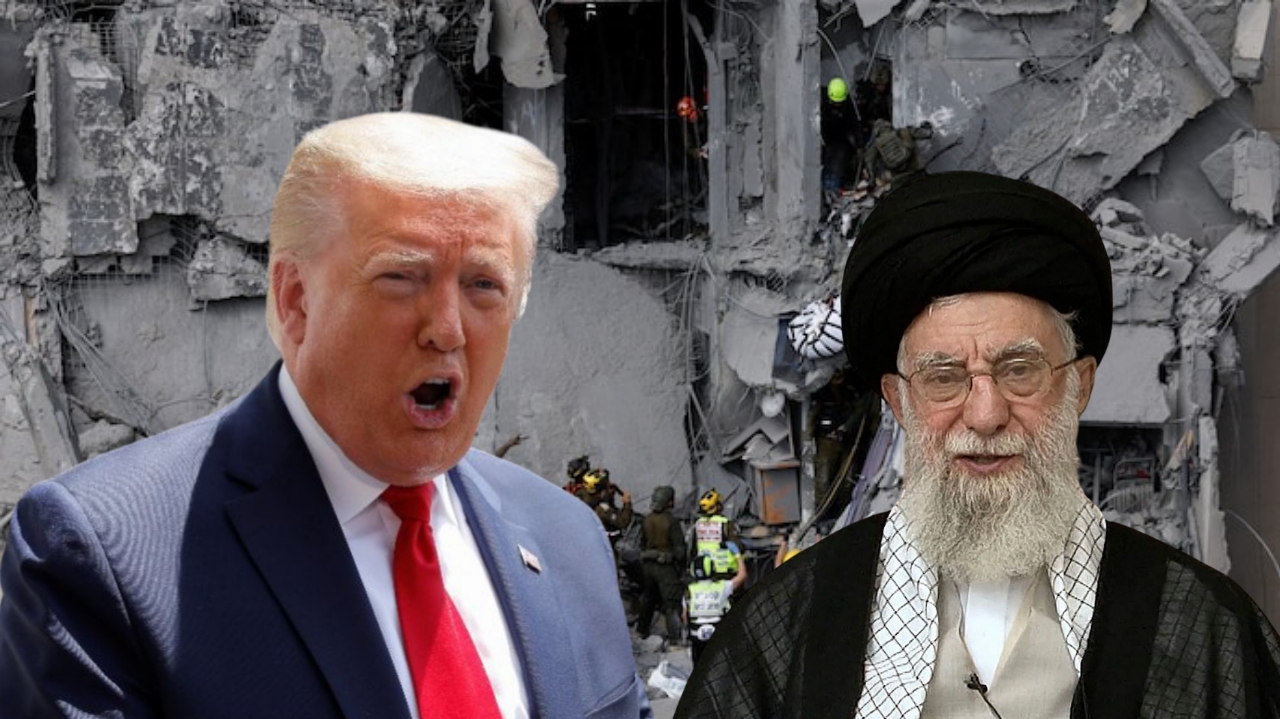Israel Attacks Iran: Understanding the Escalation, Motives, and Global Impact
Introduction

The geopolitical fault lines in the Middle East have once again erupted with the latest confrontation between Israel and Iran. The long-simmering tension finally boiled over when Israel launched a military strike on strategic Iranian targets. This event has not only escalated hostilities but also drawn global attention due to the potential for a full-scale regional war.
In this article, we provide a comprehensive, in-depth analysis of the Israel-Iran conflict, focusing on the recent attack, its background, strategic motivations, and the worldwide reaction.
Background: Israel and Iran’s Hostile History
To understand the recent events, it’s important to explore the long and tense history between Israel and Iran.
Iran’s Anti-Israel Rhetoric and Support for Proxies
Since the 1979 Iranian Revolution, Iran has declared itself the chief ideological and political opponent of Israel. The Iranian regime openly calls for the destruction of Israel and actively supports militant groups like Hezbollah in Lebanon and Hamas in Gaza, both of which have carried out numerous attacks on Israeli targets.
Israel’s Security Doctrine
Israel, on the other hand, views Iran’s nuclear ambitions and support for terrorism as existential threats. The Israeli government has made it clear that it will never allow Iran to acquire nuclear weapons, even if that means unilateral military action.
The Trigger: What Sparked the Latest Israel-Iran Conflict?
The recent attack didn’t occur in a vacuum. It followed a series of escalating events:
-
Iranian drone attacks on Israeli infrastructure via proxies in Syria and Iraq.
-
Hezbollah rocket launches from southern Lebanon into northern Israel.
-
Increased nuclear enrichment activity by Iran, with the IAEA warning that Iran may be only weeks away from weapons-grade uranium levels.
-
A suspected Iranian cyberattack on Israeli power grids and banking systems.
These provocations set the stage for a decisive Israeli military response aimed at crippling Iran’s offensive capabilities and sending a strong deterrent message.
The Attack: How Israel Struck Iran

On the early morning of the reported date (hypothetically, May 30, 2025), Israel launched a precision airstrike on multiple military and nuclear-related sites inside Iran. Sources report that F-35 stealth jets, drones, and long-range missiles were used to:
-
Target Iranian missile storage facilities in Isfahan.
-
Strike military bases in Tehran and Shiraz.
-
Disrupt operations at the Natanz nuclear facility, a known uranium enrichment center.
-
Hit command centers tied to the Islamic Revolutionary Guard Corps (IRGC).
Damage Assessment
While Iran has downplayed the extent of the damage, satellite images and intelligence reports indicate:
-
Major infrastructure damage in multiple locations.
-
Casualties among IRGC officers.
-
Temporary disruption of Iran’s nuclear enrichment activities.
Iran’s Response: Vows of Retaliation
The Iranian government responded with fury, calling the attack a “flagrant act of war.”
Statements by Iranian Leadership
Supreme Leader Ayatollah Ali Khamenei declared that Israel would “pay a heavy price.” The Iranian Foreign Ministry stated that “Iran reserves the right to respond at the time and place of its choosing.”
Iran also mobilized its air defenses and began deploying missile systems near major cities. Some unverified reports suggest Iran is preparing retaliatory strikes against Israeli embassies and regional U.S. assets.
Global Reactions: Tension on the World Stage
The Israeli attack on Iran sent shockwaves through the global diplomatic and security community.
United States
The Biden administration reportedly was not directly involved but was notified beforehand. U.S. officials have called for restraint, though they reaffirmed their commitment to Israel’s right to self-defense.
European Union
EU leaders expressed deep concern over the potential escalation and urged both sides to de-escalate immediately. France and Germany offered to mediate talks.
Russia and China
Russia condemned the attack, calling it a “destabilizing action in an already volatile region,” while China emphasized “respect for sovereignty” and warned of a broader conflict that could impact global energy markets.
United Nations
The UN Security Council held an emergency meeting, though it failed to reach a consensus due to geopolitical divisions.
Impact on Global Oil Prices and Economy

The Middle East is home to a major portion of the world’s oil supply. Following the attack, Brent crude oil prices surged past $110 per barrel, and global stock markets dipped, fearing a prolonged conflict.
Experts warn that if shipping lanes in the Strait of Hormuz are threatened, the entire global economy could feel the impact. Some insurance companies have already raised rates for tankers in the Persian Gulf region.
Why Israel Attacked: Strategic and Political Reasons
1. Preemptive Strike Doctrine
Israel’s “Begin Doctrine” (named after former Prime Minister Menachem Begin) allows for preemptive attacks on nuclear threats. It was previously applied in Iraq (1981) and Syria (2007). Iran was seen as crossing critical thresholds, triggering this strategic doctrine once again.
2. Domestic Pressure
Inside Israel, Prime Minister Benjamin Netanyahu faced increasing criticism over security failures, economic unrest, and internal political instability. The strike has momentarily unified the Israeli political landscape.
3. Weaken Iran’s Regional Influence
Iran’s support for proxies in Syria, Iraq, Lebanon, and Yemen is seen as a major regional destabilizer. This attack was also meant to diminish that influence by damaging Iran’s ability to fund and command its proxy forces.
Regional Fallout: Will This Lead to War?
Hezbollah Mobilization
Hezbollah has already fired a limited number of rockets in solidarity with Iran. There are fears that southern Lebanon may become an active front once again, mirroring the 2006 Lebanon War.
Hamas and Islamic Jihad
These Gaza-based groups have praised Iran and threatened new waves of attacks, raising concerns about a multi-front conflict.
U.S. Bases on High Alert
U.S. military bases in Iraq, Bahrain, and Qatar are reportedly on high alert, anticipating possible Iranian missile retaliation.
Saudi Arabia and Gulf States
While publicly calling for peace, several Gulf nations quietly support Israel’s actions, as they too view Iran as a major threat. Diplomatic channels between Tel Aviv and Riyadh have remained active behind the scenes.
Cyber Warfare and Information Battles
This conflict is not limited to missiles and jets. A cyberwarfare front has opened up, with:
-
Iran targeting Israeli banking and infrastructure systems.
-
Israel allegedly disabling Iranian communication networks and air defense systems.
-
Disinformation campaigns running wild on social media, making it hard to determine facts on the ground.
The Nuclear Angle: Is This a Step Toward Iran Going Nuclear?
One of the gravest concerns following the attack is Iran’s reaction regarding its nuclear program.
Iran has threatened to withdraw from the Non-Proliferation Treaty (NPT) and expel IAEA inspectors. If carried out, it could signal that Iran is now racing toward full nuclear weapon capability, a move that would cross a red line for not only Israel but also the broader international community.
What’s Next? Future Scenarios
Scenario 1: Full-Scale War
If Iran retaliates militarily in a significant way, Israel is likely to respond with greater force. This could draw in Hezbollah, Hamas, and even U.S. forces in the region, sparking a regional war.
Scenario 2: Tit-for-Tat Escalation
A slow-burning series of strikes and counter-strikes could unfold, with periodic cyber attacks, missile launches, and drone operations without a formal declaration of war.
Scenario 3: Diplomatic De-escalation
The most hopeful outcome involves urgent diplomacy leading to a ceasefire or backchannel negotiations, perhaps mediated by neutral countries or the UN.
Conclusion
The Israeli attack on Iran marks a dangerous new chapter in Middle Eastern geopolitics. It reflects decades of enmity, distrust, and failed diplomacy. While Israel claims it acted to protect itself and prevent a nuclear catastrophe, Iran sees it as an unprovoked act of war.
The international community now faces a critical moment. How it responds may determine whether this event becomes another regional flare-up—or the spark of a much larger, deadlier conflict.





